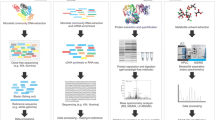Abstract
Functional capacities for bioremediation are governed by metabolic mechanisms of inhabiting microbial communities at polluted niches. Process fluctuations lead to stress scenarios where microbes evolve continuously to adapt to sustain the harsh conditions. The biological wastewater treatment (WWT) process harbors the potential of these catabolic microbes for the degradation of organic molecules. In a typical biological WWT or soil bioremediation process, several microbial species coexist which code for enzymes that degrade complex compounds.
High throughput DNA sequencing techniques for microbiome analysis in bioremediation processes have led to a powerful paradigm revealing the significance of metabolic functions and microbial diversity. The present chapter describes techniques in taxonomy and functional gene analysis for understanding bioremediation potential and novel strategies built on in silico analysis for the improvisation of existing aerobic wastewater treatment methods. Methods explaining comparative metagenomics by Metagenome Analysis server (MG-RAST) are described with successful case studies by focusing on industrial wastewaters and soil bioremediation studies.
Access this chapter
Tax calculation will be finalised at checkout
Purchases are for personal use only
Similar content being viewed by others
References
Kapley A, Jadeja NB, Paliwal V et al (2016) Microbial genomics and bioremediation of industrial wastewater. In: Environmental waste management, 1st edn. CRC Press, Boca Raton
Kapley A, Purohit HJ (2009) Diagnosis of treatment efficiency in industrial WWT plants: a case study at a refinery. ETP Environ Sci Technol 43:3789–3795
Kapley A, Prasad S, Purohit HJ (2007) Changes in microbial diversity in fed-batch reactor operation with wastewater containing nitroaromatic residues. Bioresour Technol 98:2479–2484
Kapley A, Liu R, Jadeja NB et al (2015) Shifts in microbial community and its correlation with degradative efficiency in a WWT plant. Appl Biochem Biotechnol 176:2131–2143
Rani A, Porwal S, Sharma R et al (2008) Assessment of microbial diversity in effluent treatment plants by culture dependent and culture independent approaches. Bioresour Technol 99:7098–7107
Jadeja NB, More RP, Purohit HJ et al (2014) Metagenomic analysis of oxygenases from activated sludge. Bioresour Technol 165:250–256
Yadav TC, Pal RR, Shastri S et al (2015) Comparative metagenomics demonstrating different degradative capacity of activated biomass treating hydrocarbon contaminated wastewater. Bioresour Technol 188:24–32
More RP, Mitra S, Raju SC et al (2014) Mining and assessment of catabolic pathways in the metagenome of a common effluent treatment plant to induce the degradative capacity of biomass. Bioresour Technol 153:137–146
Ju F, Guo F, Ye L et al (2014) Metagenomic analysis on seasonal microbial variations of activated sludge from a full-scale WWT plant over 4 years. Environ Microbiol Rep 6:80–89
Martín HG, Ivanova N, Kunin V et al (2006) Metagenomic analysis of two enhanced biological phosphorus removal (EBPR) sludge communities Nat. Biotech 24:1263
Albertsen M, Hansen LBS, Saunders AM et al (2012) A metagenome of a full-scale microbial community carrying out enhanced biological phosphorus removal. ISME J 6:1094
Yadav S, Kapley A (2021) Antibiotic resistance: global health crisis and metagenomics. Biotechnol Rep 29:e00604
Davidov K, Iankelevich-Kounio E, Yakovenko I et al (2020) Identification of plastic-associated species in the Mediterranean Sea using DNA metabarcoding with Nanopore MinION. Sci Rep 10:1–11
Yadav R, Rajput V, Dharne M (2021) Functional metagenomic landscape of polluted river reveals potential genes involved in degradation of xenobiotic pollutants. Environ Res 192:110332
Ju F, Guo F, Ye L et al (2014) Metagenomic analysis on seasonal microbial variations of activated sludge from a full-scale wastewater treatment plant over 4 years. Environ Microbiol Rep 6:80–89
Yu K, Zhang T (2012) Metagenomic and metatranscriptomic analysis of microbial community structure and gene expression of activated sludge. PLoS One 7:e38183
Fang H, Cai L, Yu Y et al (2013) Metagenomic analysis reveals the prevalence of biodegradation genes for organic pollutants in activated sludge. Bioresour Technol 129:209–218
Thomas T, Gilbert J, Meyer F (2012) Metagenomics – a guide from sampling to data analysis. Microb Inform Exp 2:1–12
Kakirde KS, Parsley LC, Liles MR (2010) Size does matter: application-driven approaches for soil metagenomics. Soil Biol Biochem 42:1911–1923
Meyer F, Paarmann D, D’Souza M et al (2008) The metagenomics RAST server – a public resource for the automatic phylogenetic and functional analysis of metagenomes. BMC Bioinformatics 9:1–8
Meyer F, Bagchi S, Chaterji S et al (2019) MG-RAST version 4 – lessons learned from a decade of low-budget ultra-high-throughput metagenome analysis. Brief Bioinform 20:1151–1159
https://help.mg-rast.org/user_manual.html. Accessed on July 2021
de Menezes A, Clipson N, Doyle E (2012) Comparative metatranscriptomics reveals widespread community responses during phenanthrene degradation in soil. Environ Microbiol 14:2577–2588
Parks DH, Tyson GW, Hugenholtz P et al (2014) STAMP: statistical analysis of taxonomic and functional profiles. Bioinformatics 30:3123–3124
Oliveros JC (2007) VENNY. An interactive tool for comparing lists with Venn Diagrams. http://bioinfogp.cnb.csic.es/tools/venny/index.html
Overbeek R, Olson R, Pusch GD et al (2014) The SEED and the Rapid Annotation of microbial genomes using Subsystems Technology (RAST). Nucleic Acids Res 42:D206–D214
Smoot ME, Ono K, Ruscheinski J et al (2011) Cytoscape 2.8. Bioinformatics 27:431–432
Arakawa K, Kono N, Yamada Y et al (2005) KEGG-based pathway visualization tool for complex omics data. In Silico Biol 5:419–423
Ondov BD, Bergman NH, Phillippy AM (2011) Interactive metagenomic visualization in a Web browser. BMC Bioinform 12:1–10
Jadeja NB, Purohit HJ, Kapley A (2019) Decoding microbial community intelligence through metagenomics for efficient WWT. Funct Integr Genomics 19:839–851
Bhardwaj P, Singh KR, Jadeja NB et al (2020) Atrazine bioremediation and its influence on soil microbial diversity by metagenomics analysis. Indian J Microbiol 60:388–391
Acknowledgments
The manuscript has been checked for plagiarism at an institute using iThenticate (Anti-Plagiarism Software) and granted the article reference number: CSIR-NEERI/KRC/2021/AUG/EBGD/2.
Author information
Authors and Affiliations
Corresponding author
Editor information
Editors and Affiliations
Rights and permissions
Copyright information
© 2023 The Author(s), under exclusive license to Springer Science+Business Media, LLC, part of Springer Nature
About this protocol
Cite this protocol
Jadeja, N.B., Kapley, A. (2023). Designing Knowledge-Based Bioremediation Strategies Using Metagenomics. In: Mitra, S. (eds) Metagenomic Data Analysis. Methods in Molecular Biology, vol 2649. Humana, New York, NY. https://doi.org/10.1007/978-1-0716-3072-3_9
Download citation
DOI: https://doi.org/10.1007/978-1-0716-3072-3_9
Published:
Publisher Name: Humana, New York, NY
Print ISBN: 978-1-0716-3071-6
Online ISBN: 978-1-0716-3072-3
eBook Packages: Springer Protocols



